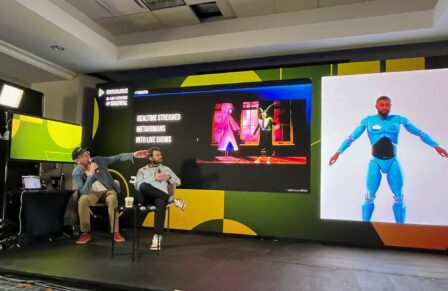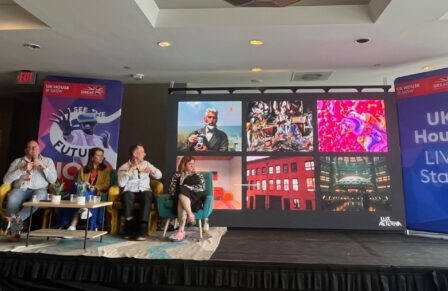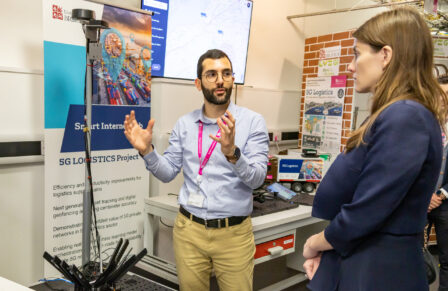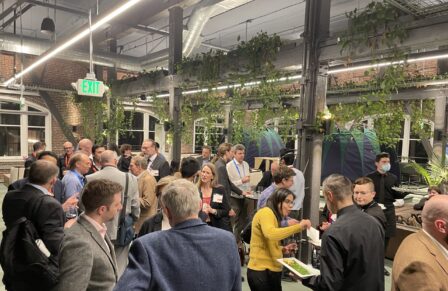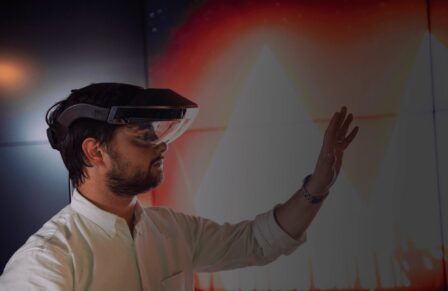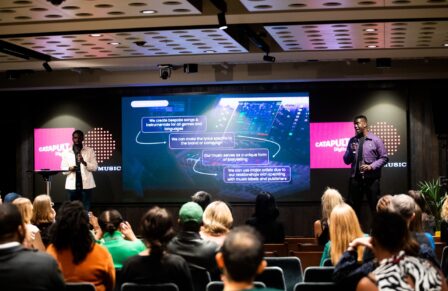A qubit case study on diamond NV centres
Posted 25 Aug 2022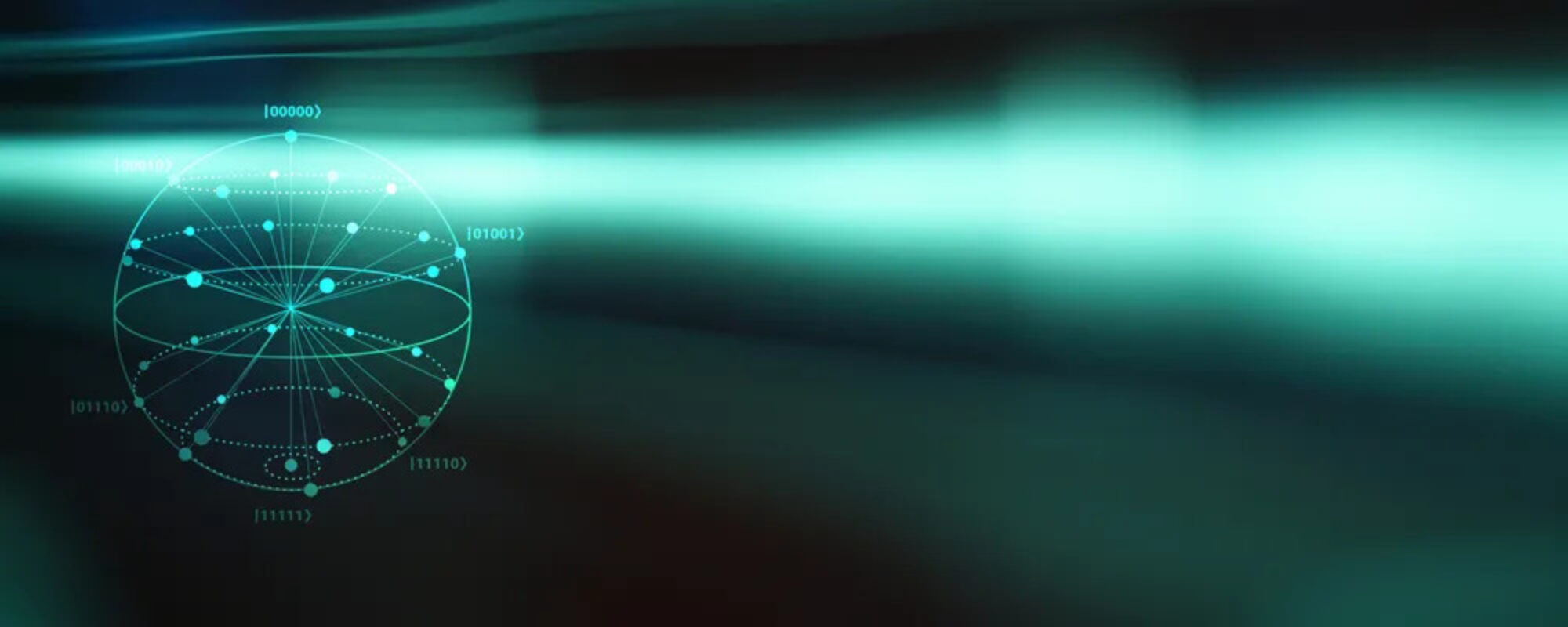
Quantum computation and communication require high quality qubits. This blog is aimed at readers who would like to understand quantum computing hardware in more detail, and it is necessary to cover some physics. I focus on diamond NV centre qubits, and the techniques to initialise, manipulate and measure the qubits are common to other qubit technologies.
I will look at whether diamond NV centre qubits satisfy David DiVincenzo’s seven criteria for qubits. Five of David DiVincenzo’s criteria relate to quantum computing. He argues that we need
- A scalable, physical system with well characterised qubits
- The ability to initialise the state of the qubits
- Long relevant decoherence times, much longer than the gate operation time
- A universal set of quantum gates
- A qubit-specific measurement capability
For quantum communications we need:
- The ability to interconvert stationary and flying qubits
- The ability faithfully to transmit flying qubits between specified locations
Before explaining these technical terms, let us start by looking at the diamond NV centre. A pure diamond is transparent to light. However, sometimes there are defects in the diamond’s regular crystal lattice of carbon atoms. When these defects occur the diamonds can absorb light at different wavelengths, and appear coloured.
A diamond nitrogen vacancy (NV) colour centre is a defect formed when a nitrogen atom is substituted for a carbon atom next to another lattice site also missing a carbon atom. The electrons trapped in the vacancy form an NV colour centre which absorbs light at certain wavelengths, and has useful optical and spin properties.
David DiVincenzo’s first criteria was “a scalable physical system with well characterised qubits”. Let us see if the diamond NV centre is scalable, and look at the relevant energy levels.
Scalability and qubit energy levels
Many qubits are needed for a useful quantum device, and it is important to understand how qubits can scale. In 2019 Conor Bradley demonstrated a diamond NV centre quantum register of up to ten qubits. This is fewer than the number of qubits available in ion trap devices and the 127 qubits in the IBM Eagle device. Fortunately, there are well established nano-fabrication techniques which could be used in the future to increase the number of qubits for diamond NV centres. Also, other colour centres in diamond have been studied and Noel Wan speculates in a 2019 paper that silicon and germanium vacancy centres may be easier to integrate into large-scale devices.
Let us now look at the diamond NV centre energy levels. If you are interested in the details then you may like the 2015 paper by Xing Rong and others Each electron bound to the NV centre has a “spin “of ½. When the two electrons point in opposite direction the spins cancel out to give a total spin ms=0. When two of the electrons are pointing in the same direction the spins add together to get a total spin ms=+1 or ms=-1. In this configuration the electron energy is higher because of so-called “spin-spin” interactions.
Electrons have a lower energy when aligned with a magnetic field, so when a magnetic field is applied the ms=-1 state will have a higher energy than the ms=+1.
The diamond NV centre has two clearly defined states: the ground ms=0 state |0>, and the excited ms=+1 state |1>, which are shown in the diagram. These states, called the “computational basis”, are used for quantum computation. The ms=-1 state is not used
Now we have defined the computation basis, which is the |0> and |1> quantum states, let us look at how the qubits are initialised ready for the start of the computation.
Initialising the qubits
If a beam of laser light with exactly the right frequency is shone at our diamond NV centre then electrons in both the |0> and |1> states absorb photons and are pumped to a higher energy level. These electrons will then fluoresce and return to their original state. However, electrons which started in the |1> state can decay back to their original state through a singlet state as well. The transition from the singlet state to the |0> state is preferred over the transition to the |1> state, so the probability of the |0> state increases. If the laser light shines for long enough the NV centre will be initialised to the |0> state.
Having shown we can initialise our qubits let us look at coherence times.
Coherence times
No quantum device can be a totally closed system and qubits can couple with the environment, for example, through stray electromagnetic fields, or the surrounding heat bath, and lose information on their quantum state as they decohere. Coherence must be maintained throughout a quantum computation, and in this respect diamond NV centres compare well with other qubit types.
Diamond is formed under high temperature and pressure and each carbon atom in the diamond lattice has four stiff, stable bonds with other carbon atoms. This reduces the number of phonons (quanta of vibration) and increases coherence times.
Coherence times can be increased further by a technique called dynamic decoupling, where microwave pulses flip the qubit back and forth to average out the impact of the environment. There are two types of pulses used, CPMG, where the pulses have a uniform time separation, and UDD, where the pulses times vary. There is lots of research on which is the best type of pulse to use.
If the diamond used is not pure, the NV centre spin couples to constantly varying carbon-13 and nitrogen-14 nuclear spins and coherence is gradually lost. By using diamond with a high purity of 99.9995% carbon-12 and substitutional nitrogen less than 10 parts per billion Jingfu Zhang and others showed that two diamond NV centre qubits operating at room temperature could solve Grover’s search algorithm.
Having initialised our qubits we need to carry out operations on the qubits quantum state.
A universal set of gates
Single qubit gate operations
When short microwave pulses are applied to a single qubit at a frequency which matches the energy gap between the |0> and |1> states, as shown below, then “Rabi oscillations” are induced, causing the quantum state of the qubit to oscillate between the |0> and |1> states.
By carefully controlling the duration and energy of the microwave pulse the qubit can be forced into a different quantum state. For example, in the diagram below a pulse of 10 nanoseconds will move the qubit state from the |0> state to the |1> state. A pulse of 5 nanoseconds will move the state to a 1/2 (|0> + |1>) superposition state. In the superposition state when the qubit is measured it is found to be in |0> state half the time and the |1> state the rest of the time. This superposition state is the basis for quantum computing. In some algorithms, both states are sampled at the same time, and this “parallel processing” leads to a huge increase in efficiency.
Two qubit gate operations
A CNOT gate is a quantum qubit gate, where the state of a target qubit is flipped if a control qubit is in the |1> state. In diamond NV centres, hybrid CNOT gates can be implemented where the NV centre controls the spin of a target nuclear qubit using radio frequency pulses. If the NV centre is in the |1> ms=1 state it produces a magnetic field, which couples with nearby carbon-13 and nitrogen-14 spins. Each nucleus has a different distance from, and alignment with, the NV centre, so feels a different magnetic field, has a different resonant frequency, and can be controlled using a radio pulse at this unique frequency.
If the NV centre is in the |0> ms=0 state then there is no magnetic field, and the nuclear spin does not change when the radio frequency pulse is applied.
The result is a CNOT gate, where the state of the nuclear qubit is changed, or not changed, depending on the state of the NV centre qubit.
Quantum gates are inevitably error prone. In a 2015 paper Xing Rongan reported an average single-qubit gate fidelity of 0.999952 and two-qubit gate fidelity of 0.992, not quite as high as the gate fidelity of rival super-conducting and ion trap schemes.
Having established that we can implement one and two qubit gates of reasonable fidelity, let us look at how the qubit state can be measured after the computation is complete.
Measurement of the qubit state
The qubit state can be measured using a technique called optically detected magnetic resonance (ODMR). A green laser pulse causes red fluorescence if the NV centre is in the |0> ms=0 state. The fluorescence is higher for the |0> state because of the additional non-radiative decay pathway available to the |1> state through a singlet state. This means the NV centre is “dark” if it is in the |1> ms=-1 state. By measuring whether the qubit is fluorescing or dark using a photo detector, the state of the qubit can be determined.
Diamond has a high refractive index so the fluorescent photons in the ground state may experience total internal refraction and remain in the diamond. As shown in a 2011 paper by Lucio Robledo and others, an integrated solid immersion lens can help photons escape.
Despite this lens, there is always a State Preparation and Measurement (SPAM) error associated with the initialization and measuring process.
Quantum communications
In a 2021 paper, Matteo Pompili and others made an important step towards the quantum internet by implementing a three node quantum network using diamond NV centres. Photons, which act as the flying qubits needed for quantum communication, were used to entangle the diamond NV centre qubits. A carbon-13 atom on one of the diamonds acted as a memory qubit.
To conclude
Qubits based on diamond NV centres meet David DiVincenzo’s seven criteria for quantum computing and communications. The qubits can be initialised, measured, and single and two gate operations can be carried out. Coherence times are excellent. On the other hand, the hybrid two qubit gates have relatively low gate fidelities and are asymmetric because the nuclear spin qubit is always the target gate. In common with other qubit types, initialisation and measurement introduce SPAM errors, in addition to the errors from decoherence and gate operations. Fewer qubits have been implemented for NV centres than for other contemporary devices.
NV centres are able to interact with photons acting as flying qubits. This makes it likely that qubits based on diamond NV centres will be deployed in quantum communications, with integrated nuclear spin qubits providing a limited amount of quantum memory.
Given these good features, it is not surprising that there is a lot of work on diamond NV quantum computing technology, and a recent article by Quantum Insider lists five companies that are working with Diamond NV Quantum Computing Technology.
This blog is based on a case-study I wrote during my Quantum Technologies Masters course at University College London.


